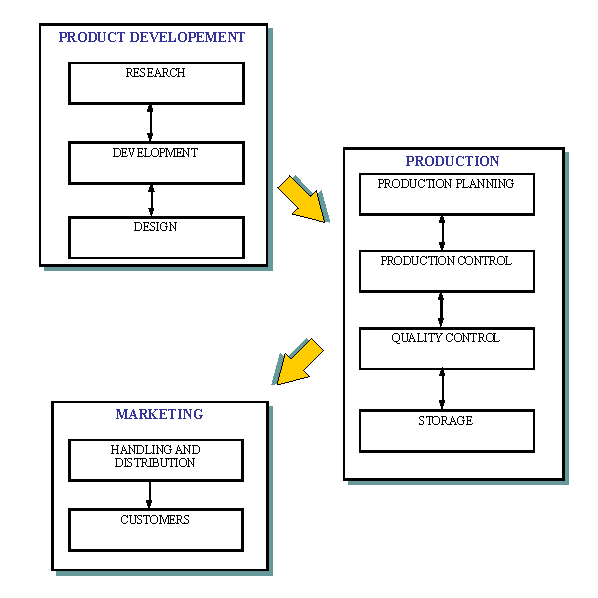|
The diagram below shows how the departments at a typical manufacturing company interact with each other during production. The notes below the diagram explains how the interaction between the different departments actually takes place. |
|
|
|
|
|
|
|
PRODUCT DEVELOPMENT: The product (gears in this case) are developed by
these three departments. The researchers gather information on new and
improved materials that can be machined. Then, the new gear system is
developed using complex engineers software such as ‘AutoCAD’. The gears
are tested on the computer system to see if they work. The designers
take the findings from the research and development stage and fit the
new gear system to a variety of vehicles. All three departments work
very closely together and meet at least on a weekly basis. Sometimes
they work in teams made up of researchers, development managers and
designers. |
| PRODUCTION:
Once a prototype gear system has been produced it is tested rigorously
and the design specification is passed on to the production line. The
Manufacturing Manager takes over and plans mass production. He/she works
closely with a number of junior managers who plan each stage of
manufacture, to the smallest detail (Section Managers). It is essential
that the managers of each section of production meet regularly to solve
problems and suggest improvements to the manufacturing operation. |
| MARKETING:
Customers requirements are listened to at all times. Products are only
developed if market research shows there is a need for them. |
|
|
| Draw a diagram that represents the interaction of departments for the company you visited. Add detailed notes explaining the nature of the interaction. |
